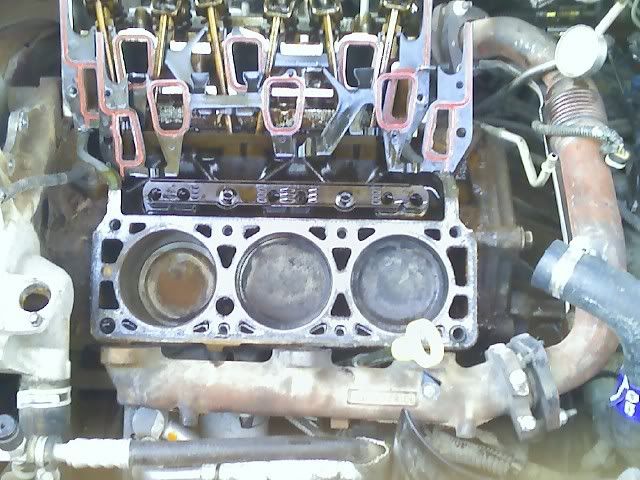I've got an '06 LX9 (3500 from a Malibu) in an MGB, and have rotated the upper & lower intake manifolds to put the intake at the 'front' of the engine. I have a couple thousand miles on the swap, and it's running reasonably well.
I have 2 coolant temp sensors - one at the front of the head, and one at the back. I have noticed that the temp at the back of the engine oscillates from 180ish to 210F over a 3-5 minute period, while the front is reasonably steady at 195F. I'm baffled as to why the rear temp oscillates, but it's clear to me that the engine isn't being well cooled at the back.
Giving some thought to what happens with the rotated manifolds, I've concluded that the coolant is not forced to run the length of the engine - it is pumped into the left & right of the block, flows up to the heads, and out the t-stat housing - all at the front. In the original configuration, the coolant enters the block at the 'front', but the t-stat housing is at the 'back', so the coolant flows down the length of the block & heads before exiting.
Firstly, have any other 'swappers' noticed this? I've searched high & low, and no-one else seems particularly concerned (or has the instrumentation to notice the problem).
Second, I'm looking for feedback on a proposed solution: I'm thinking about drilling & tapping the rear coolant passageway in the lower intake manifold (1/2" NPT), then running the coolant forward to the heater intake pipe on the water pump. This would enable some coolant to flow completely through the engine, particularly when the t-stat is closed. The downside is that less coolant would be forced through the radiator when the t-stat was fully open. Also, I'm adding another possible failure point at the tapped opening in the LIM.
Any feedback or advice from prior experience would be appreciated!
I have 2 coolant temp sensors - one at the front of the head, and one at the back. I have noticed that the temp at the back of the engine oscillates from 180ish to 210F over a 3-5 minute period, while the front is reasonably steady at 195F. I'm baffled as to why the rear temp oscillates, but it's clear to me that the engine isn't being well cooled at the back.
Giving some thought to what happens with the rotated manifolds, I've concluded that the coolant is not forced to run the length of the engine - it is pumped into the left & right of the block, flows up to the heads, and out the t-stat housing - all at the front. In the original configuration, the coolant enters the block at the 'front', but the t-stat housing is at the 'back', so the coolant flows down the length of the block & heads before exiting.
Firstly, have any other 'swappers' noticed this? I've searched high & low, and no-one else seems particularly concerned (or has the instrumentation to notice the problem).
Second, I'm looking for feedback on a proposed solution: I'm thinking about drilling & tapping the rear coolant passageway in the lower intake manifold (1/2" NPT), then running the coolant forward to the heater intake pipe on the water pump. This would enable some coolant to flow completely through the engine, particularly when the t-stat is closed. The downside is that less coolant would be forced through the radiator when the t-stat was fully open. Also, I'm adding another possible failure point at the tapped opening in the LIM.
Any feedback or advice from prior experience would be appreciated!



Comment